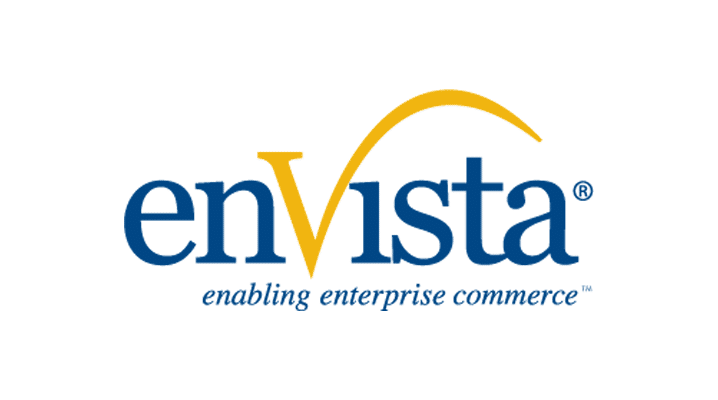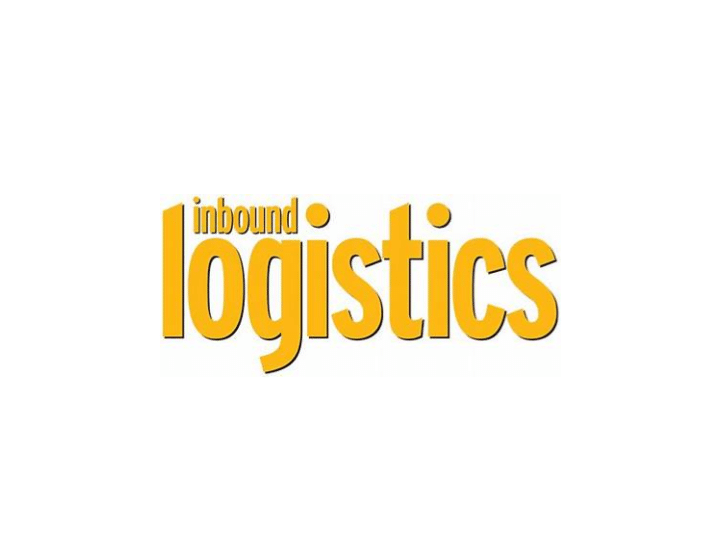CSCMP CEO Rick Blasgen and Talking Logistics’ Adrian Gonzalez will keynote enVista’s executive summit, FUEL 2018
7 Digital Retail Personalization Tactics to Take
Reading Time: 2 minutes
By Jim Barnes
Today’s customers have more choices than ever and will choose to shop with retailers that make them feel valued time and time again. For those retailers that understand the customer’s happiness is the way to remain relevant, transforming digitally to deliver personalized, seamless customer experiences is a must.
Gone are the days of siloed advertisements and one-size fits all promotion. Fortunately, today’s opportunities to personalize online experiences beyond just a purchase are numerous.
So, what is digital retail personalization? Retail personalization is a strategy that seeks to build brand loyalty by presenting compelling experiences to customers based on their likes and wants. Personalization requires retailers to have a deep understanding of individual customers, which demands a strong data strategy. Retailers who get personalization right drive deeper customer loyalty while increasing sales.
In this article, we’ll look at seven tactics to enhance customer experience through digital retail personalization by establishing relationships using customer data, email campaigns, product recommendations and more.
Tactic 1: Favorites and wish lists provide digital convenience that permits customers to buy when they are ready to buy and makes reordering easy. They enable targeted remarketing, either through email or directly on the e-commerce page, complete with reminders and/or incentives to reengage with the customer to complete the sales process. Both are available in most e-commerce platforms or through additional third-party plug-ins.
Tactic 2: Customized microsites based on customer preferences
Customers will be drawn to today’s most popular products, and microsites enable retailers to easily spin up customized websites based on those types of customer preferences and order history to possibly upsell or complete a sale. These sites can be set to expire after a certain number of hours/days and can showcase items based on most clicked, reviewed, and/or purchased. Microsites have been shown to increase conversion by as much as 50 percent as compared to a typical website bounce-back link.
Tactic 3: Deliver dynamic, customized email campaigns to retarget
Leverage your CRM and marketing platform to deliver relevant, personalized messages and offers. Whether in the form of pop ups after a customer has placed an item in his/her cart without making a purchase, or targeted emails, most marketing platforms will allow a way to scale personalization based on customer data to offer the most relevant items, images, copy, and promotions to your customers.
Fail Fast, Then Move On
Reading Time: 2 minutes
Jim Barnes did not have a mentor at the start of his career. “No one taught me how to become a leader,” recalls Barnes, chief executive officer of enVista, an Indianapolis-based supply chain consultancy and software firm.
Instead, observation and experience helped Barnes develop his leadership principles. “I’m a stickler about communication, building a culture around trust and conflict resolution, and taking calculated risks,” he says. Failure is fine as long as you fail fast and then move on to succeed. “Progress is not a straight line,” he adds. “Progress is curvy.”
Here are some insights we gained when we spoke with Barnes about his work and his leadership values.
IL: What was your first experience in supply chain management?
While earning my MBA, I worked as a senior process engineer and management trainee at Johnson & Johnson’s Iolab division. We made cataract lenses and provided all the equipment and pharmaceuticals cataract patients needed. I was assigned to a task force charged with streamlining logistics, which were broken. It took us weeks to get a lens to a doctor. Our goal was to become so efficient and effective that a doctor could place an order before 3 pm and have it delivered by 10 am the next day.
After taking a close look at our distribution network and transportation with FedEx, we took weeks out of the supply chain. We could deliver not only our own product the next day, but also product from sister divisions, such as sutures and garments, in what was almost a drop-ship solution. This was a huge request from our CEO; it taught me to believe in creating stretch goals for yourself and your organization.
IL: You talk about failing fast and moving on. Did you ever learn a lesson from a failure?
In my early career, I formed a business partnership that didn’t work out. I failed in picking a partner because I didn’t seek out someone whose core values and moral compass aligned with mine. That failure taught me to focus on building lasting business relationships based on trust.
IL: Has a customer ever given you an unexpected assignment?
We once helped the e-commerce division of a major retailer analyze its inbound freight as a percentage of overall costs. We also helped them select a transportation management system (TMS). Then the senior vice president informed me that enVista would run this operation for his company. I told him we had never run a control tower before. But we had reached a level of trust. He said, “You’ll figure it out.” I agreed to do it for a year or two, under contract, and then turn it over to them. As it turned out, that partnership lasted for nine years.
IL: What issues keep your customers awake at night?
They worry about how to produce a unique experience for their own customers. Everything is about creating brand loyalists and brand ambassadors. Also, our customers struggle with how to manage the cost versus service model, because obviously there’s no such thing as free shipping. Nobody would pay for Amazon Prime if Amazon didn’t keep its promise to deliver in two days. The fee underwrites the cost of that fast delivery. That’s what supply chain professionals are trying to understand: What is the balance between time and cost, and then how do you manage it?
Supply Chain News: More Smart Ideas for Reducing Transportation Costs
Reading Time: 2 minutes
Geoffrey Milsom of Consulting Firm enVista Offers Other Ideas to Take Out Freight Costs
In his First Thoughts column last week, SCDigest editor Dan Gilmore offered a number of ideas – some of them a bit out of the box – for reducing transportation costs. (See Smart Ideas for Reducing Transport Costs.)
Of course, soaring transportation costs are playing havoc with logistics budgets and even corporate profits, with a growign number of companies citing cost and capacity issues as impacting the bottom line.
Supply Chain Digest Says…
A constant struggle is understanding true fleet costs compared to truckload pricing contracts, but that aside, levering the fleet is most often the lower cost option.
What do you say?
Click here to send us your comments
Click here to see reader feedback
One idea Gilmore cited in his column came from Geoffrey Milsom, a senior director at consulting firm enVista. That idea – relative to balancing spot and contract market usage – was actually one of a number of good ideas Milson provided via email.
Here are the rest:
Strategic Ideas
General Conversations: We have been asked by several very large shippers recently to help them address the rising (and theoretically) unavoidable cost increases in transportation, particularly in the truckload segment, on how they can address the rising costs due to the capacity crunch.
Our short answer is that you cannot beat the market on an on-going basis, but you can focus on “moving freight differently” and re-thinking your sourcing strategies, optimization, modal-shift, TMS-supported processes, carrier relationships, and the operation things that follow. The longer answer involves not asking us to provide an outlook to predict the truckload market trends to tell the CFO that this broader market issues are unsolvable at the shipper level.
Network Design: The number 1 driver of transportation cost is the location of facilities (suppliers, DCs, and customers). While moving these, particularly for manufacturing, is very difficult, the lane pairs, mileage, and associated cost models (specific to LTL and parcel) creates a larger cost gap than just the modal decision once these points are fixed. The decision on where to put a facility then requires baking in more than just transportation cost (labor, real estate, inventory, etc.), though calculating these in unison can drive the most optimal total landed cost to the customer, while also adding in the service component, which has been disrupted by Amazon and other on-line only retailers.
Operational/Tactical
Tactical Sourcing: We have been working with shippers across several verticals this year on how to tactically source lanes, with and without TMSs implemented. We have found, through analyzing their historical truckload shipment data compared to market spot and market contract rates, that shippers have a very hard time establishing the optimal mix on their lanes.
What this means is they “play” in the spot market when they shouldn’t, and don’t when they should. It’s unrealistic for any shipper to achieve the optimal mix (hindsight being 20/20), but our shipper clients have a tendency to miss by greater than 50% of the time. The point of the story is that if shippers can move to a more real-time understanding of the markets, supported by strong process design plus strong TMS applications, they can do a better job mitigating their cost increases.
enVista Named an Inc. 5000 Fastest Growing Privately Held Company for Eighth Consecutive Year
enVista announces it ranks on Inc. magazine’s annual Inc. 5000 list, an exclusive ranking of the nation’s fastest-growing, private companies.
Footwear E-Tailers: Shoe Me The Money
Reading Time: < 1 minute
Footwear is walking away with consumer dollars online. Revenue from online footwear sales will jump 9.1 percent in 2018, predicts industry researcher IBISWorld. Between now and 2023, it expects to see continued growth, although at a lower annual rate of 6.3 percent.
Rising consumer spending in general, improved security and accessibility for online shopping, and traditional brick-and-mortar retailers adding e-commerce to re-capture sales lost to online-only retailers attributes to the growth.
“Like other e-commerce industries, the growth of online shoe sales has been positively influenced by the increasing accessibility of mobile internet connections,” says IBISWorld’s Online Shoe Sales Report in the U.S., released earlier in 2018. “The easier and more affordable it is to connect to the internet, the more accessible internet retailers are, making consumers more likely to purchase from online stores.”
Despite that growth, online footwear retailers still face many challenges. Thanks to the Amazon effect, consumers expect free shipping and returns. And because shoppers often order more than one size because of concerns about fit, the return rate can be as high as 35 percent—three times that of e-commerce in general. That makes shipping a significant expense that eats into profitability.




